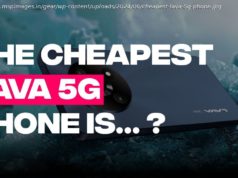How did Carvana go from powerhouse to flop? The „Amazon of used cars“ saw a boom during the pandemic, but now it may be facing bankruptcy.
The Covid-19 pandemic might have wreaked havoc across countless industries and led to billions of dollars of losses for the U.S. economy, but there were a few companies that gained massively from the past few years of turmoil. Carvana was one of those companies, with its stock price reaching an all-time high of $360.98 per share in August 2021 (via Yahoo! Finance). However, just a year and a half later, Carvana’s stock has collapsed over 98% from its peak and currently sits at under $5.00 at the time of writing. A brutal fall from grace, then, for a company that was at one point hailed as the „Amazon of used cars.“
The blame for Carvana’s fall can’t be put down solely on the easing of pandemic restrictions, as the company made a number of poorly-timed investment choices that crippled its ability to continue being an innovator in the industry. With the supply of new cars no longer as badly affected by the global chip shortage, there are early signs that prices of used cars are beginning to correct from their pandemic highs. Carvana’s large inventory, combined with the overheads it incurs as part of its unique business model, puts it at a significant disadvantage compared to traditional, location-based used car dealers. Only time will tell whether the company can survive or not, but let’s take a closer look at what exactly went wrong for Carvana over the past year or so.
Carvana’s origins can be traced back to DriveTime Automotive, the used car dealership chain that’s owned by Ernest Garcia II. Garcia II’s son, Ernest Garcia III, reportedly founded Carvana as a subsidiary of his father’s company after graduating from university, and originally all of Carvana’s inventory was bought directly from DriveTime. Garcia II also injected a significant amount of start-up capital directly into Carvana, amounting to around $100 million, according to Forbes. A few years later, Carvana was spun off to form a standalone company, no longer purchasing its stock from DriveTime.
Forbes notes that, although Garcia II provided a significant amount of the initial funding for the firm, and was also the biggest shareholder, he was not listed as a director or officer of the company when it was spun off. The report speculates that one of the reasons for this was due to Garcia II’s previous conviction for bank fraud, relating to dealings with a previous company. Instead, it was Garcia III that became the CEO and the public face of Carvana. In 2017, the company debuted on the New York Stock Exchange, but this initial launch was far from perfect. After launching at $15.00 a share, the stock plunged to around $8.50 a share, at which point Garcia II reportedly bought a further 465,000 shares. His investment proved a shrewd one, as by the year’s end, the stock was back to trading above the price of its initial offering.
Before the Covid pandemic catapulted Carvana to historic highs, it had already proved to be somewhat of a disruptor in the industry. One of its unique selling points was that, instead of picking up their car from a local dealership, buyers could use one of the company’s eye-catching „vending machines.“ These vending machines were glass towers that were several stories high, with a selection of used cars that could be seen clearly from the outside. When a buyer finalized a purchase, they were given an oversized coin, which they could slot into a retrieval system. This system would then grab the car from its shelf in the vending machine and deliver it straight to the waiting customer in the collection bay.
From that point, the buyer would have seven days to inspect and test the car, to see if it was to their liking.






